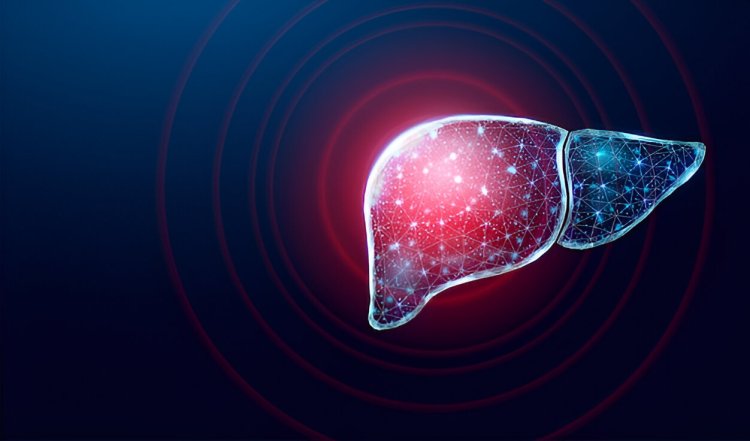Transforming Hepatology: The Rise of MASH and Metabolic Therapeutics in Liver Care
This evolution, accompanied by groundbreaking obesity-targeted therapeutic innovations, is reshaping the landscape of liver disease management and offering new hope for millions of patients worldwide.
Share this Post to earn Money ( Upto ₹100 per 1000 Views )

Modern hepatology is experiencing a fundamental paradigm shift as metabolic dysfunction emerges as the central focus of liver disease understanding and treatment. The progressive transition from Non-Alcoholic Steatohepatitis (NASH) to Metabolic Dysfunction-Associated Steatohepatitis (MASH) represents a revolutionary change in medical perspective.
MASH: A New Paradigm in Liver Disease Classification
The development of MASH terminology signifies a crucial advancement in medical understanding that transcends simple diagnostic relabeling. Traditional NASH classification relied on exclusionary principles, often leaving gaps in understanding disease mechanisms and therapeutic targets. MASH addresses these limitations by providing a positive, mechanism-based diagnostic framework.
This new classification system recognizes liver disease as an integral component of systemic metabolic dysfunction rather than an isolated hepatic condition. MASH encompasses the complex interplay between metabolic syndrome, insulin resistance, and hepatic inflammation, providing clinicians with clearer therapeutic targets and improved treatment strategies.
The MASH framework also promotes patient engagement by emphasizing the medical nature of metabolic dysfunction and reducing stigma associated with liver disease. This approach encourages earlier intervention and better long-term treatment compliance, ultimately leading to improved clinical outcomes and enhanced quality of life.
Metabolic Networks: The Foundation of Liver Disease Progression
Understanding MASH requires comprehensive knowledge of the metabolic networks that govern liver function and dysfunction. The liver serves as a central metabolic hub, processing nutrients, regulating glucose homeostasis, and managing lipid metabolism. When these systems become dysregulated, the liver bears the brunt of metabolic stress.
Metabolic dysfunction in MASH involves multiple interconnected pathways, including insulin resistance, lipotoxicity, oxidative stress, and inflammatory activation. These processes create a self-perpetuating cycle of hepatic damage that traditional liver-focused treatments struggle to interrupt effectively.
The breakthrough in efficacy in MASH treatment has come from therapies that target these metabolic networks comprehensively rather than addressing individual symptoms. This systems-based approach offers sustainable treatment outcomes by addressing the fundamental drivers of liver disease progression.
Revolutionary Therapeutics: Incretin Pathway Interventions
The emergence of incretin-based therapies has transformed the therapeutic landscape for MASH patients by targeting metabolic dysfunction at its core. Semaglutide and tirzepatide represent paradigm-shifting treatments that address multiple aspects of metabolic dysfunction simultaneously.
Semaglutide's comprehensive metabolic effects extend well beyond glucose control to include substantial weight reduction and direct hepatic benefits. Clinical investigations demonstrate that semaglutide treatment results in significant improvements in liver histology, with numerous patients achieving complete MASH resolution and measurable fibrosis improvement. The medication's mechanisms include appetite regulation, delayed gastric emptying, and enhanced insulin sensitivity.
Tirzepatide's innovative dual GLP-1/GIP receptor agonism provides enhanced metabolic regulation compared to single-pathway interventions. This sophisticated approach delivers superior weight loss outcomes and improved glucose homeostasis, with preliminary data suggesting exceptional effectiveness in MASH treatment. The dual mechanism addresses multiple metabolic pathways simultaneously, offering comprehensive therapeutic benefits.
These breakthrough medications represent a fundamental shift from managing symptoms to correcting underlying metabolic dysfunction, providing patients with more effective and sustainable treatment options.
Next-Generation Innovation: Efinopegdutide's Dual-Receptor Strategy
The pharmaceutical industry's commitment to MASH treatment innovation is exemplified by advanced therapies like Merck's efinopegdutide, which represents a significant advancement in metabolic liver disease therapeutics. This novel compound combines GLP-1 and glucagon receptor agonism in a single molecule, creating unprecedented therapeutic potential.
Efinopegdutide's dual-receptor approach provides complementary metabolic benefits that address multiple facets of MASH pathophysiology. The GLP-1 component contributes appetite suppression and glucose regulation, while the glucagon component enhances energy expenditure and promotes hepatic fat oxidation. This synergistic combination may offer superior therapeutic outcomes compared to existing single-pathway treatments.
Clinical trial data demonstrate efinopegdutide's exceptional ability to reduce hepatic fat accumulation and improve comprehensive metabolic profiles. The medication's convenient once-weekly dosing schedule addresses practical considerations of treatment adherence, which is crucial for long-term MASH management success.
Early clinical evidence suggests that efinopegdutide may establish new therapeutic standards for MASH treatment while potentially expanding applications to comprehensive metabolic syndrome management, representing a significant advancement in personalized medicine approaches.
The Future of Metabolic Hepatology
The transformation toward MASH-centered treatment approaches represents a fundamental evolution in hepatology that extends far beyond diagnostic terminology. The success of metabolic-targeted therapies validates the paradigm of treating liver disease through comprehensive metabolic intervention rather than organ-specific approaches.
Future developments in MASH treatment will likely incorporate precision medicine strategies, utilizing advanced genetic profiling and metabolic phenotyping to customize therapeutic interventions for individual patients. Multi-pathway combination therapies may become standard clinical practice, offering enhanced effectiveness and personalized treatment approaches.
The convergence of obesity medicine and hepatology represents a transformative development that promises dramatically improved outcomes for patients worldwide. As pharmaceutical innovation accelerates and our understanding of metabolic dysfunction deepens, the future holds exceptional promise for revolutionary therapies that address fundamental causes of liver disease while providing comprehensive metabolic health benefits. This evolution represents one of the most significant paradigm shifts in modern hepatology, offering renewed hope for effective treatment of one of the world's most prevalent liver conditions.
Latest Blogs Offered By DelveInsight:
-
Unveiling the Future: Global Neuroendocrine Tumor Market Trends & Innovations
-
Novartis’ LUTATHERA for GEP-NET Treatment: Ray of Hope for Pediatric Patient
-
Late-Breaking Science at AAN 2025: Shaping the Future of Neurology
-
ACC.25 Highlights: Groundbreaking Advances in Cardiovascular Medicine and Emerging Therapeutics
Latest Reports:-
Chronic Refractory Cough Market | Chronic Gout Market | Chronic Rhinosinustis Market | Rhinosinusitis Market | Circadian Rhythm Disorders Market | Clostridium Difficile Infections Market | Compartment Syndrome Market | Complement 3 Glomerulopathy Market | Crps Market | Congenital Heart Defect Market | Congenital Hyperinsulinism Market | Congenital Ichthyosis Market | Chronic Heart Failure Market | Continuous Renal Replacement Therapy Machines Market | Contraceptive Devices Market | Convulsive Seizures Market | Coronary Angiography Devices Market | Coronary Stents Market | Cough Assisted Device Market | Ctcl Market | Cystic Fibrosis Market | Cystic Fibrosis Market Companies | Cystinosis Market | Deep Brain Stimulation Market | Degenerative Disc Disease Ddd Market | Delirium Market | Dementia Market | Dental Equipment Market | Dental Implants And Prosthesis Market | Dental Laser Market | Dermal Erythema Market | Desmoplastic Small Round Cell Tumors Dsrcts Market | Diabetes Insipidus Market | Diabetic Foot Ulcers Dfus Market | Diabetic Macular Edema Market | Retinal Edema Market | Peripheral Neuritis Market | Diabetic Peripheral Neuropathy Market | Diabetic Eye Disease Market | Diabetic Retinopathy Market | Diamond Blackfan Anemia Market | Diverticulosis Market | Down Syndrome Market















